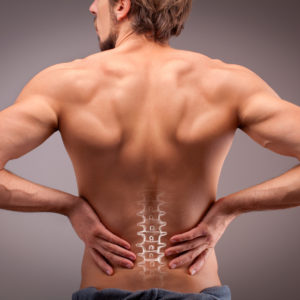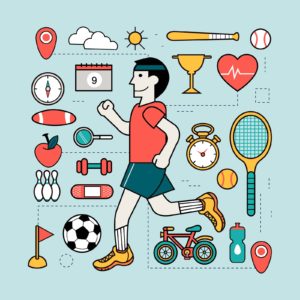Most of us will have back pain at some point in our lives. Some of us worse than others. But what are the things we need to know to help make sure it is just a brief episode and doesn’t turn into a long term issue? Keep reading while we bust some myths for you…….
MYTH 1 – I’ll probably need surgery for my back.
Nope, statistically you won’t. The majority of back pain comes right without the need for surgery. Many, well meaning, people will take pleasure in telling you about the time they had back pain and had to have this or that type of surgery. I liken it to restaurant reviews, people are much more likely to write a review when they’ve had a bad experience – right? Likewise, people are much more likely to talk about their back pain if they’ve had a bad experience – you probably won’t hear from the people that had some back pain, had a couple of sessions of physio, did a few exercises and came right fairly quickly.
It’s true, there are some people that need to have surgery for their back pain, but most people don’t. Research has actually shown that 18months down the track people who have had surgery and people who haven’t are usually pretty much at the same functional level.
Like we said at the beginning, 80% of people will have back pain in their life – so you’re actually kind of abnormal if you haven’t had back pain!!
MYTH 2 – I need an MRI to find out what is going on
A study was done that looked at lower back MRI findings and found that:
- 91% had disc degeneration
- 56% had disc height loss
- 64% had disc bulges
- 32% had disc protrusions
- 38% had annular tears
(McCullough et al, Radiology 2012)
Now, the interesting thing here is that these were all PAIN-FREE individuals! This tells us that changes to your discs are just a normal part of aging, like wrinkles on your skin or grey hair. Consequently, we have to be really careful when we interpret MRI results because a huge amount of the time the changes found will have nothing to do with the pain.
There is also some evidence that people who have MRI’s have worse outcomes. Possibly because the results from the MRI leads people into believing their backs are injured, broken and delicate. This then makes them protect their back instead of using it – leading to weakness, tightness and potentially more pain.
MYTH 3 – My back pain is caused by something being “out of place”
Your back is a strong supple structure that can withstand extremely high forces, very rarely is something ever “out of place”. Go and look in the mirror just now, are you shoulders exactly the same height? Is one eye the same height as the other? What about your ears? Are your waist angles even? Does one leg look longer than the other? Is one hip further forward than the other? Chances are the answer to at least one of these questions is yes. And this is NORMAL FOR YOU! It has no link to development of back pain.
Sometimes people feel better after having their back manipulated or “clicked”, this can temporarily relieve pain due to short-term effects on the nervous system. It is not putting anything back into place. You can click joints on people with pain and without pain just the same, the clicking sound is simply the pressure in the joint changing.
MYTH 4 – I should avoid exercise when I have back pain
Most definitely not! You may not be able to do quite your normal level or type of exercise but research keeps proving and proving again that exercise is one of the best treatments for back pain, and it doesn’t matter too much what. It can be walking, bike riding, swimming or specific exercises your physio gives you. Exercise helps to decrease muscle tension, improve your mood and boost your immune system – all of which also help to reduce pain.
If you have been inactive for quite a while then it can be hard to get back in to exercise. Ease yourself in gently and come in and see us if you want some advice.
MYTH 5 – I need to brace my tummy muscles to protect myself
Mostly no. VERY gently engaging your deep abdominals and pelvic floor can be beneficial when moving but this should never be thought of as bracing. If you suck your tummy muscles and brace, then try and breathe normally, and then try and bend your back……..you’ll probably find you can’t do either very well. Our tummy muscles need to be relaxed for us to move properly. We often see (and hear) people with back pain holding their breath and bracing their tummy before they start to bend their back – and it’s actually doing more harm than good. Let your tummy hang out and breathe – your back will thank you!
MYTH 6 – Bend from the knees and keep your back straight!
Many of us have grown up hearing this old adage, it’s been around for ages and probably seemed to make sense at the time. However research is now showing us the our spines NEED to bend to be healthy and letting them bend whilst lifting is actually more efficient and less injury-inducing. Loading our back whilst bending actually seems to make it stronger. So don’t over think they way you lift – do what feels most natural and comfortable to you.
(Holder et al MSc 2014, Martimo et al BMJ 2014)
MYTH 7 – I shouldn’t slouch when I’m sitting
Again, this is something that has been around for a long time but actually the research shows us there is very little link between back pain and sitting posture. Sometimes you can actually pick out a person with back pain by spotting how rigidly straight they are sitting! Different sitting postures suit different people. The key here just seems to be not to sit for too long in one position, sit however is comfortable for you. Slouching is fine, variety is key!

